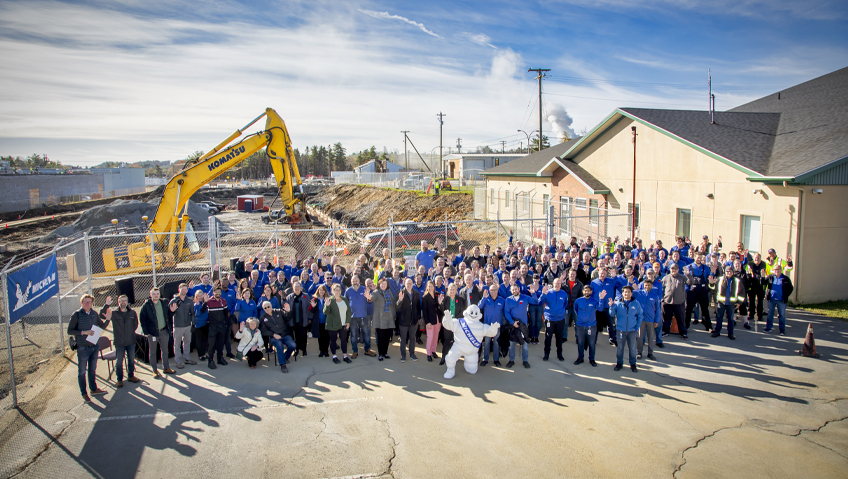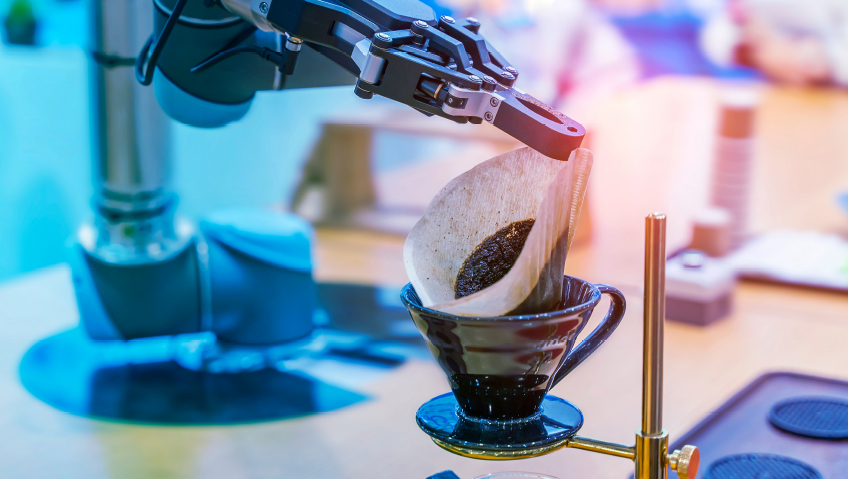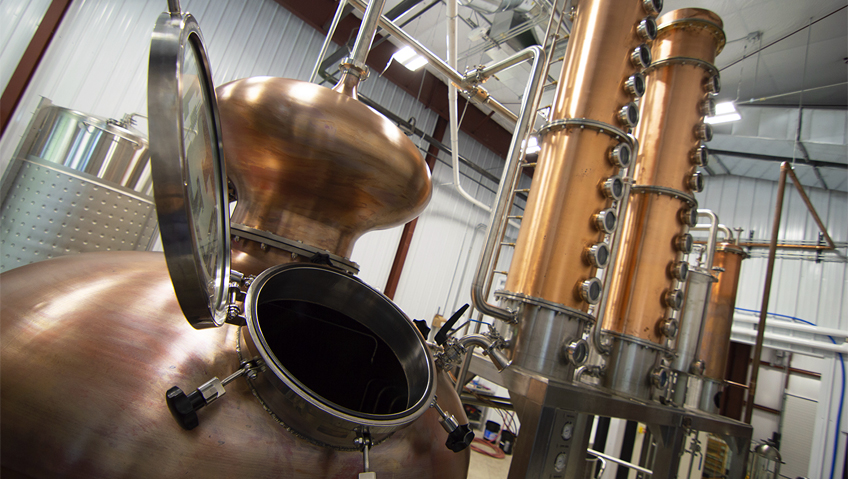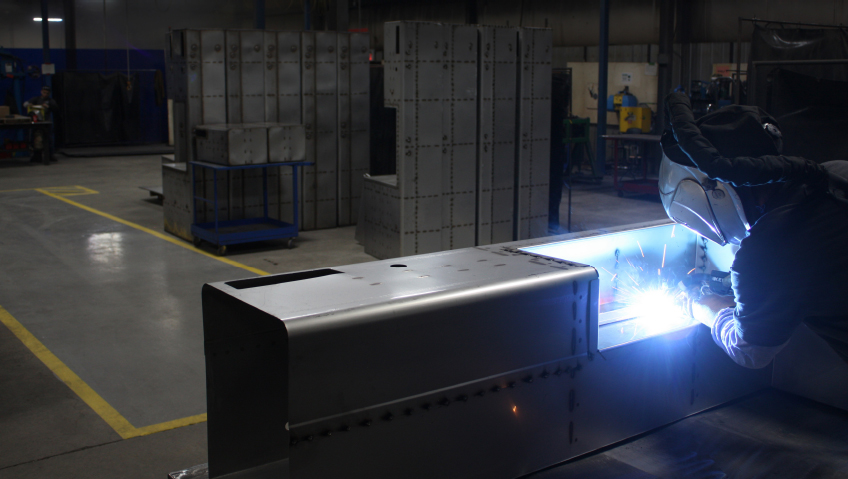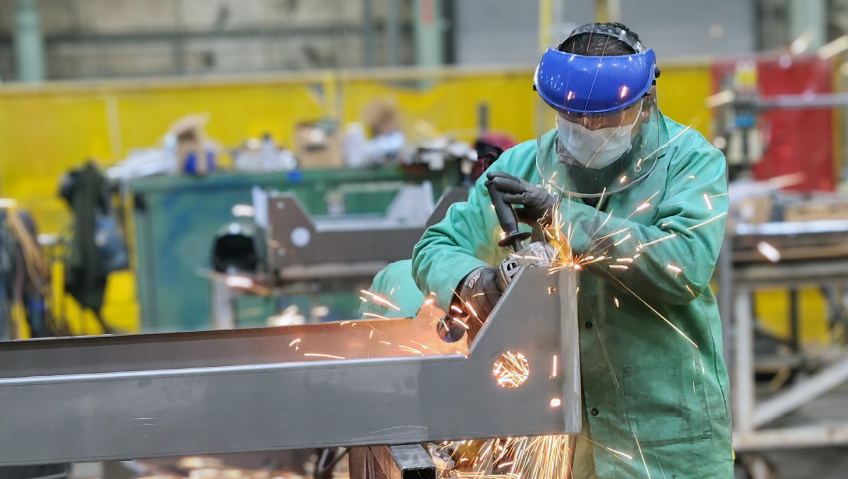Since 1891, when Michelin brothers Édouard and André, who ran a rubber factory in Clermont-Ferrand, France, applied for their first patent for an easy-to-remove pneumatic bicycle tire that lent itself to quick repairs, Michelin has been revolutionizing the tire industry.
In 1946, it was the introduction of the radial tire, which offered greater flexibility and fuel economy than what was offered by the industry standard, the bias ply tire. In 1992, Michelin introduced its first Green X tire aimed at improving the fuel mileage of a vehicle. In recent years, Michelin has focused on issues of ecological sustainability and how its products can contribute to the achievement of a net zero carbon world by 2050.
Word from the top
To learn more, we spoke with Andrew Mutch, President of Michelin North America (Canada) Ltd., from company headquarters in Pictou County, Nova Scotia.
Mutch, who’s been in the presidential role since 2019, joined the company upon graduating from the engineering department of the University of Prince Edward Island and the University of New Brunswick in 1987.
“When I graduated, I knew I wanted to work for an international company but one with a local context, so that I could see a bit of the world but I could always come home,” he says.
Michelin, which has 74 plants and over 132,000 employees worldwide, and had opened its first North American plant in Pictou County, Nova Scotia in 1971, was a perfect fit. It gave Mutch opportunities to work as an industrial engineer and in various management positions in all three Nova Scotian facilities—Pictou, Bridgewater, and Waterville—as well as in Oklahoma, where a facility opened in 1971, and in South Carolina, at the company’s North American headquarters, before “coming home to the Maritimes.”
People, planet, profit
Underpinning Michelin’s drive toward a net zero carbon world is its sustainable strategy based on a philosophy of balancing people, planet, and profit. As Mutch explains, “Every direction and every decision Michelin takes must balance those factors because you can’t be sustainable if you’re only great with people and profitability but not respecting the planet. But at the same time, we have to be profitable so that we can invest in our people and re-invest in innovations that will benefit our planet and that includes how we make tires, how we reduce our footprint from a manufacturing perspective, and how our products will make a more sustainable future.”
Michelin has set a goal of producing net zero carbon emissions across all its manufacturing sites and is looking at how alternative energy options, such as wind, solar power, and biomass, can be used in its facilities.
Mutch told us he is excited about working with a Canadian company that uses a pyrolysis process to convert biomass into a low-carbon fuel oil that can be used in boilers in place of the natural gas currently used. This method has the potential to substantially reduce greenhouse gas (GHG) emissions in the areas environmental scientists classify as Scope 1 (direct use of fossil fuel through combustion).
“We ran a test in our Waterville facility that was operationally successful. We’ve engaged with the provincial government and other stakeholders so they can learn and benefit from our experience with this low-carbon fuel,” he says. “We don’t want to keep all this knowledge to ourselves; we want to share it so everyone can advance.”
Additionally, in keeping with its commitment to the planet, Michelin plans to have 100 percent of its materials coming from sources that are renewable, meaning it can be replaced within a human life span of approximately 70 years, or are from recycled feedstocks.
Supplanting the supply chain
Controlling things inside the fence line is only part of the story. Ultimately, products need to get to market, which also has an impact on GHG emissions.
A project initiated at the Pictou County plant, where the majority of winter tires are produced and shipped across Canada, is looking at changing the current delivery model. Today, a product could be shipped first to one large distribution centre, then to another, and then to the customer’s distribution centre, and finally to the customer’s warehouse. A delivery model being trialled by the Pictou County plant sees tires delivered directly into the hands of the customer.
“This pilot improved availability for our customers, reduced logistics costs, increased sales, and lessened the impact on the environment because less fuel was being used,” Mutch explains. “It’s end-to-end thinking. It’s about working with customers, identifying the touch points, decreasing them, and optimizing the process.”
And it’s a perfect example of Michelin’s people-profit-planet model because, while helping customers and saving shipping and distribution costs, it has also saved 50 tons of CO2 emissions from going into the atmosphere.
Greener with the Green Freight Program
A significant portion of the CO2 emissions that create global warming comes from the commercial long-haul trucks and trailers essential to the supply chain and moving products across the continent. Michelin has been contracted through its GreenerFleets business to help many active Canadian fleets navigate and access funding through the Canadian government’s Green Freight Program. Acting as a consultant to fleets enrolled in this incentivizing program across the country, Michelin is helping them optimize the energy efficiency of their entire fleet and reduce GHG emissions.
One way of doing this is to reduce the rolling resistance of tires, because the higher the level of resistance, the greater the load on the truck’s engine, leading to increased consumption of diesel and more GHG emissions.
Michelin, recognized as a leader in fuel economizing in the long-haul industry with its X Line Energy Z+ commercial tire, is continuing to invest in technology at its Waterville plant to further reduce the rolling resistance of its tires, lowering diesel consumption and GHG emissions while still meeting all performance requirements.
In its role as consultant, Michelin is engaged with helping 93 fleets across Canada reduce their costs and their environmental impact by helping them apply for federal grants to retrofit their vehicles with lower rolling-resistance tires and improved aerodynamics on their trailers, which will improve drag reduction and again lower fuel consumption.
Michelin also provides digital tools to help fleets optimize performance—maintaining proper air pressure in tires and giving feedback to drivers as to how to be more energy-efficient in the way they drive.
“It’s a wonderful virtuous circle we’re involved with, and we’re excited to be part of it,” Mutch says, “because it’s estimated that in the next four years, those 93 fleets will be saving 159,000 tons of CO2.”
Not only is the Waterville facility playing a dynamic role in the Canadian trucking industry, but the Michelin X-One double-wide tires it produces are contributing to global strategies for emission reductions.
As Mutch explains, “Because of the Infinicoil® technology that is in those tires, they have lower rolling resistance which reduces fuel consumption. Since the trucks only have half as many tires, they can carry a larger load than when riding on single tires and reduce the number of pressure checks and rotations.
Turning up the tires for EVs
Although all of Michelin’s passenger tires are suitable for electric vehicles, both cars and small trucks, the Bridgewater facility is preparing for the next generation of tires that will optimize the performance of EVs and accommodate their characteristics.
Typically, EVs are heavier than internal combustion engine vehicles because of the heavy battery or batteries. EVs also have more torque available at any speed. Any time the driver steps on the energy pedal, full power can be rapidly transmitted to the tire.
In addition, Mutch says, EV drivers might experience “range anxiety,” concerned with how far they can travel before needing to recharge. “So the challenge for the tires is they have to be able to handle more weight, manage the torque, and have improved rolling resistance while meeting all the other characteristics of starting, stopping, turning, and handling,” he explains.
Just as improved rolling performance reduces fuel consumption, these next-generation tires will also reduce the amount of energy used by the battery, increasing its range and lessening the range anxiety of the driver. “We have to be prepared for this emerging market and we are installing the technology and capacity to do that,” says Mutch.
A future for hydrogen
He went on to say that while Michelin recognizes EVs are a good solution to the GHG issue, “we don’t believe it’s the only solution and we believe there is a future for mobility with hydrogen. It’s going to have a place somewhere and, at a global level, Michelin has been working on hydrogen for the last 20 years and formed a joint venture with a company that makes hydrogen fuel cells capable of powering the largest commercial vehicles,” he shares.
“Nova Scotia has a unique opportunity because of all the investments in hydrogen that are coming to the province, so rather than just export hydrogen, what can we do to develop a domestic use for it in Atlantic Canada? We’re exploring ways where we can start to build an ecosystem in Nova Scotia to make use of domestic hydrogen and install transition technology so that eventually we can get to things like fuel cells.”
Green mobility
In addition to helping its customers reduce their GHG emissions through the supply chain, Michelin also has a goal to reduce its own CO2 emissions to meet international goals.
Last year, Michelin invested $300 million in a plan to modernize its Nova Scotian plants and electrify some of its processes. These include the investment made in Bridgewater to bring in electric curing presses—replacing the steam-powered ones—which will be more energy-efficient and environmentally friendly. The company is also improving safety and ergonomics at all three of its plants, and in addition to the progress it is making on energy in the plants, it is also diverting waste streams and finding alternative uses for them.
The Bridgewater facility has been able to divert 100 percent of its production waste from landfill since 2017 and Mutch says the other two sites are making good progress toward that figure. He adds that, “from 2010 to now, we reduced our GHG emissions by 41 percent, so we are well on track to meet the 2030 goal of 50 percent.”
Powered by optimism
In an age of doom and gloom forecasts regarding global warming and climate change, we asked Mutch about his perspective on the net zero carbon future.
“Our planet needs our help,” he says. “It needs us to be advancing as fast as we can and we need to be responsible corporate citizens, pushing as hard as we possibly can to reduce our emissions and take our footprint to zero,” he says.
“Am I optimistic? Yes, I’m always optimistic. But is it easy? No, it’s hard because it takes a lot of work, and support from corporations, governments, and academia, and we need new avenues and incubators to bring all these things to fruition. But if you have a goal, and put your energy into renewable energy, then I believe you can advance.”

